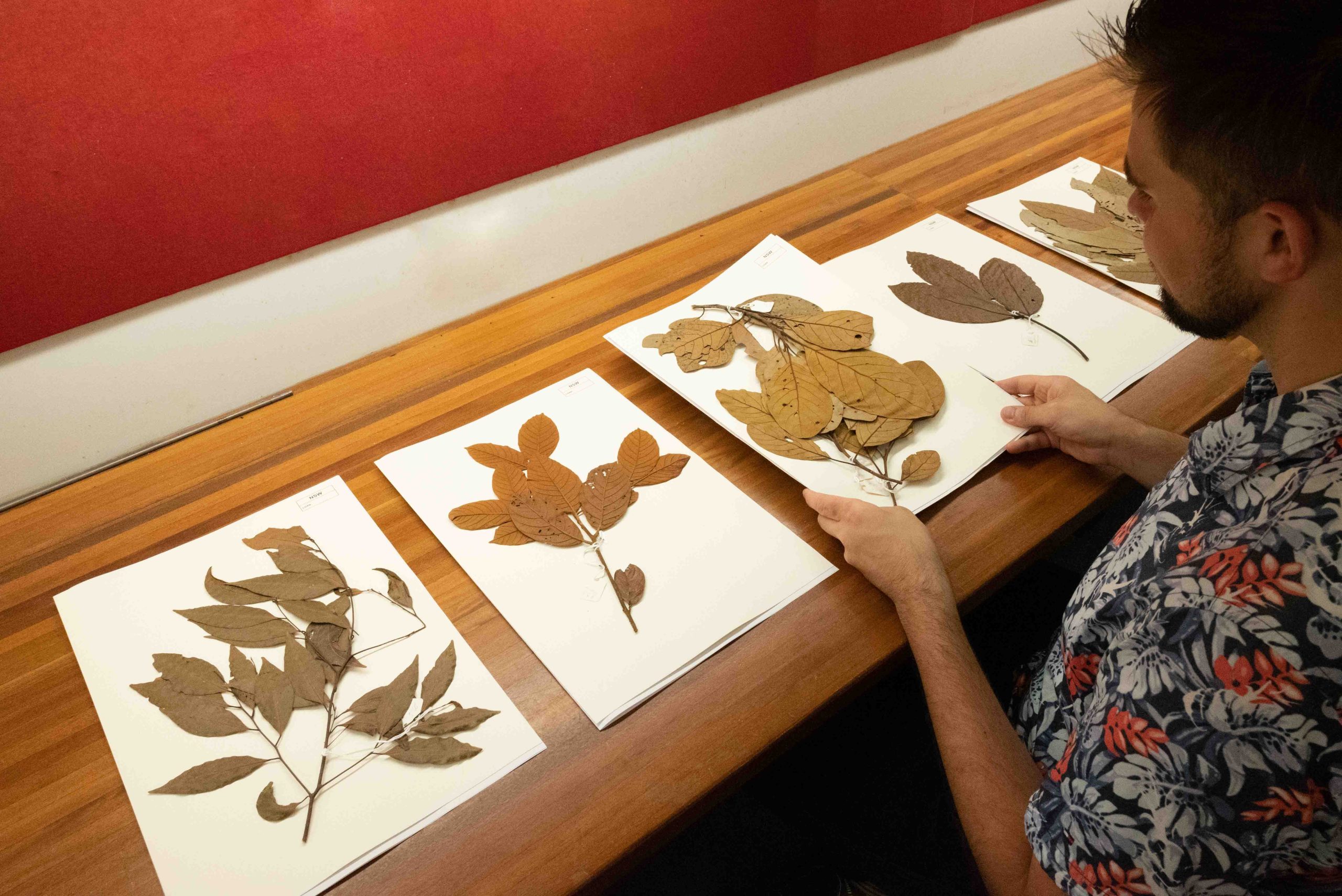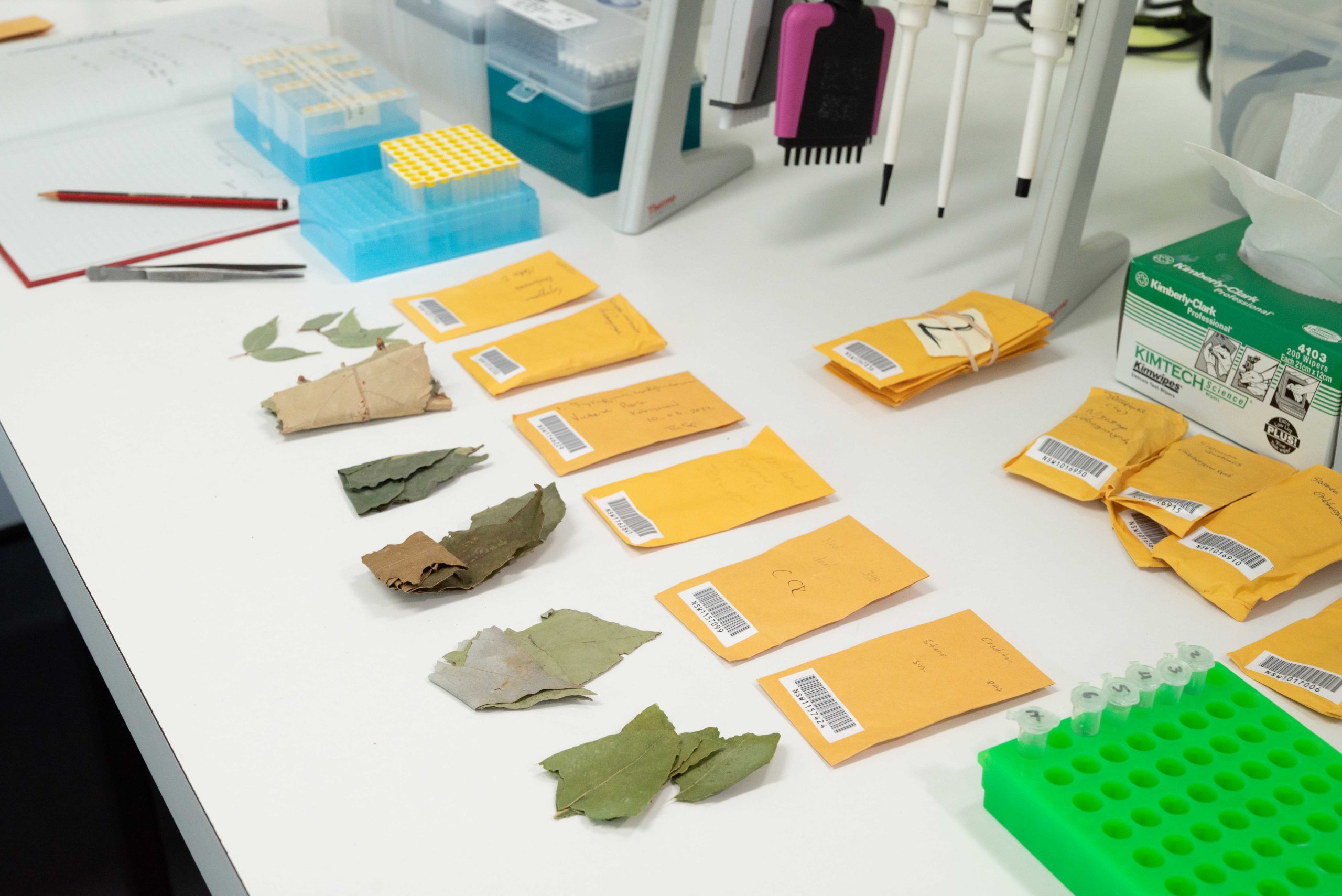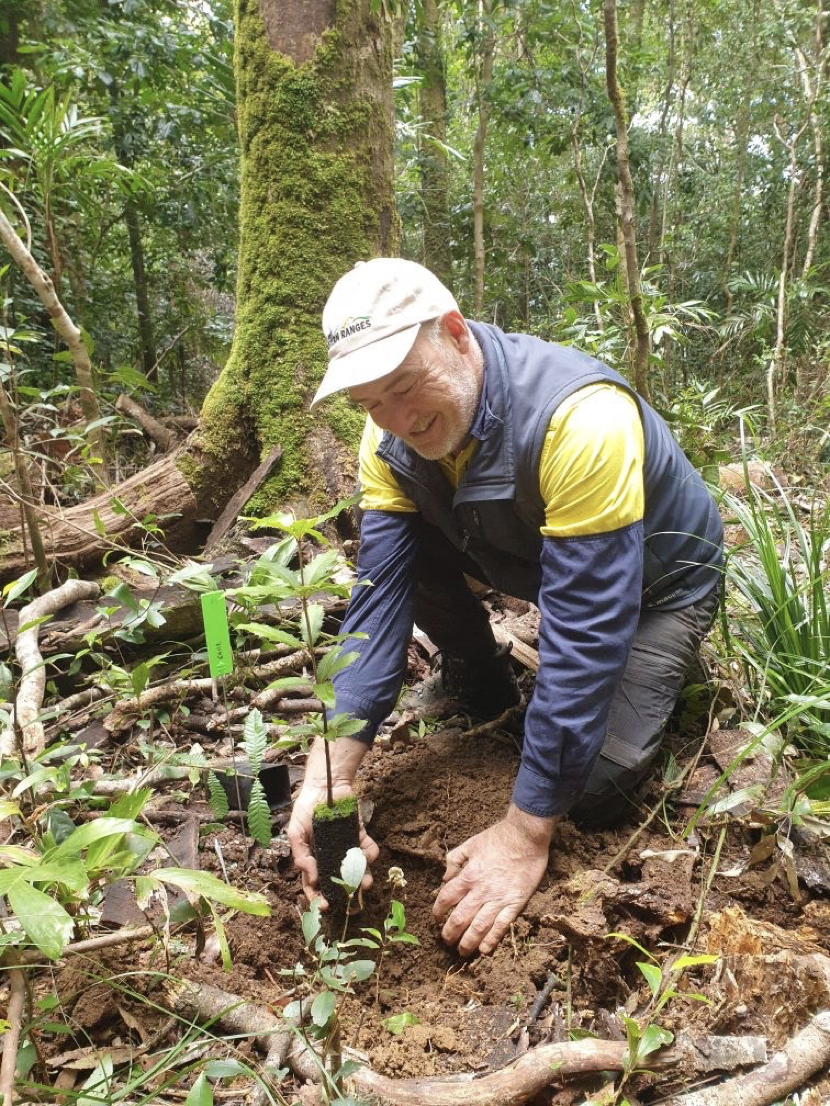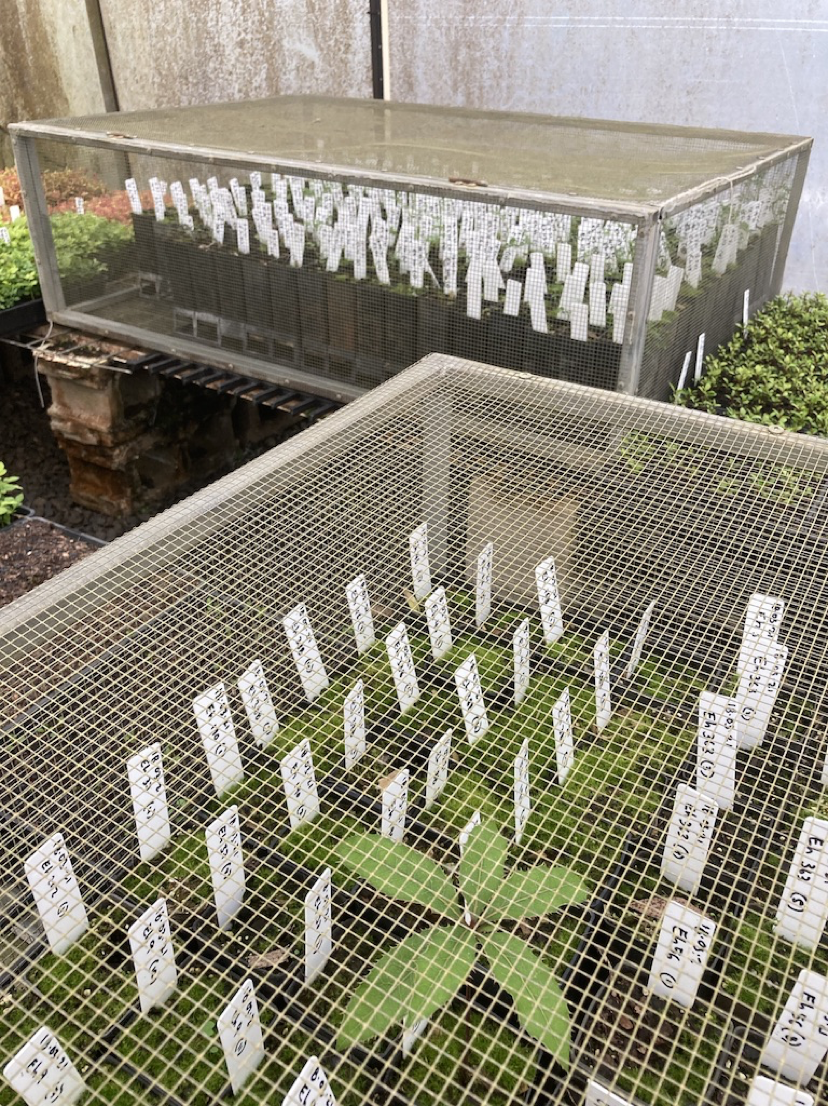Science Saving Rainforests
A new approach to saving rainforests
Our Science Saving Rainforests project aims to restore the genetic diversity of key Big Scrub tree species to avoid inbreeding and future proof them from emerging threats, such as disease, pests and climate change.
Together with Australia’s leading rainforest geneticists at the Research Centre for Ecosystem Resilience, Botanic Gardens of Sydney, we’re working to reverse the lack of genetic diversity in small, isolated populations of many species that are threatened with extinction or crucial to the structure of the Big Scrub but are no longer self-sustaining. Unless something is done they are at risk of extinction.
Methodology Overview
DNA sequencing is being conducted on more than 10,000 leaf samples collected across the population ranges of 60 threatened and structural species. Genome analyses of the DNA sequences of each species will identify 20 to 30 populations that collectively have the optimal genetic diversity to avoid inbreeding and provide resilience to other threats to the survival of lowland subtropical rainforest.
Seed Bank Plantation
Propagation of genetically optimal planting stockCuttings, juveniles or seed will be collected from each of 20 to 30 populations of each species and propagated into planting stock that will be used in developing a living
seed bank plantation to produce genetically optimal seed for use in restoration plantings.
Distribution
Introduction of genetically optimal planting stockThe genetically optimal planting stock will be planted at restoration sites as well as distributed throughout the remnants where possible, re-introducing the genetic diversity lost through generations of fragmentation and isolation and helping to avoid the extinction of the Big Scrub.
Recovering Threatened Species
A new, cost-effective approachSelected genetically-optimal restoration plantings will provide sustainable habitat for cost-effective translocation recovery plantings of discrete populations of the threatened plant species, each with optimal genetic diversity to help ensure their long term sustainability and survival.
Detailed Approach



Research Methodology
A rigorous review process involving various stakeholders was conducted to identify 30 key structural species* and 30 threatened species of trees that occur in our critically endangered lowland subtropical rainforest. These 60 tree species will be the subject of research and analysis to identify and restore the genetic diversity required to build self-sustaining populations into the future and help save the Big Scrub and its threatened species from extinction.
The threat of extinction arises principally from the lack of genetic diversity in the very small populations of key structural and threatened species in the isolated remnants of this ecological community and also in the extensive restoration plantings of more than 2.5 million trees in the Big Scrub region.
Sample Collection and Analysis
More than 10,000 leaf samples are being collected from six individual trees in typically 30 populations across the NSW and Qld ranges of each of the 60 species. The collections are being undertaken by our partner, Dr Robert Kooyman BSc(Hons) PhD, one of Australia’s leading rainforest field ecologists, and his colleagues. DNA of the leaf samples will be sequenced by the Program’s contractor, Diversity Arrays Technology.
Botanic Gardens of Sydney
The Research Centre for Ecosystem Resilience (ReCER) team of our program partner, Botanic Gardens of Sydney, will undertake genome analyses of the sequenced DNA of each of the 60 species and identify up to 30 or more populations of each species that collectively have the optimal genetic diversity for the Big Scrub region to avoid inbreeding depression and provide resilience to climate change and emerging insect pests and diseases. Species with little genetic diversity across their range will also be identified and excluded from subsequent stages of the Program (‘the excluded species’).
*Key structural species mainly comprise important species that contribute to the closed canopy that characterises lowland subtropical rainforest and contributes to its unique microclimate.
Seed Bank Plantation
The next phase of this long-term project will see the selected trees from each targeted population propagated and planted in a Macadamia-style plantation in Wollongbar, NSW. Propagules (cuttings, seed or juveniles) will be collected from identified target populations of each of the 60 species (less the excluded species). Planting stock grown from propagules of up to 30 or more individuals of each genetically diverse key structural and threatened species will be used in the development of a plantation that will be a genetically optimal living seed bank of each of those species.



Distribution Plan
When the plantation trees start fruiting, which may take six to ten years for some species, the genetically optimal seed will be harvested and propagated by our partner Firewheel Rainforest Nursery into planting stock for distribution to rainforest restoration planting contractors and nurseries for use in plantings on private land to restore critically endangered lowland subtropical rainforest. More than 2.5m rainforest trees have been planted in the Big Scrub region over the past 30 years and the plantings are continuing at a rate of more than 200,000 trees pa.
Planting stock of each genetically diverse key structural species will also be used in the development of a demonstration sustainable restoration planting of critically endangered lowland subtropical rainforest comprising the genetically diverse key structural species.
This demonstration planting will provide excellent habitat in terms of species diversity and long-term sustainability for discrete, sustainable translocation recovery plantings of the genetically optimal threatened species.
This will enhance the sustainability of these plantings and the flow of the optimal genes across the landscape, including into remnants and previous plantings. The area of annual restoration plantings continues to expand each year in the Big Scrub – in 2022 it amounted to an estimated 80 ha (250,000 trees).
Threatened Species Recovery
Such restoration plantings of critically endangered lowland subtropical rainforest will provide excellent habitat in terms of species diversity and long-term sustainability for discrete translocation recovery plantings of the genetically optimal threatened species. Two sites to demonstrate this very cost-effective approach to threatened species recovery are being developed.
Other Benefits
The innovative genetics-based methodology of this program can be applied to the restoration of other heavily degraded ecosystems and to enhance the longevity of major reforestation projects and carbon sequestration plantings in Australia and internationally.
These restoration plantings provide sustainable and expanding habitat for the many threatened fauna species that occur in the Big Scrub.

